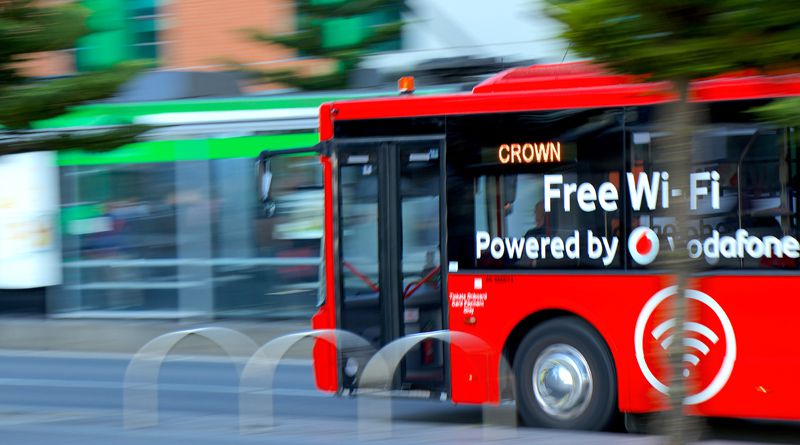Technology has been integrated into education and curriculum for decades now, but it has become even more important during the time of COVID-19. Many schools are only offering e-learning, while others offer a blend of e-learning and attending brick and mortar campuses. For many school districts across the country, the shift to e-learning was an inconvenience, but it was able to happen after training and working with educators to ensure they knew all of the necessary programs. However, some districts in the United States were not able to shift as easily.
Underfunded schools have to battle wide funding gaps, and this problem seems to extend more to districts with minority students. In fact, a 2020 study by The Century Foundation discovered that these districts face an average deficit of $5,000 per student, with some states in the southwestern part of the country seeing deficits upwards of $7,000. Bringing technology into the curriculum in these districts thus seems much harder to do, but it is possible with some creative solutions, potential grant applications, or playing around with a limited budget. Keep reading to learn about four tips to try and bring technology into underfunded American classrooms and combat the digital inequity that your school may have.
1. Apply for any available grants.

A huge problem that school administrators face when they are looking at their budgets each year is trying to find any available money to allocate toward tools that can assist in educating their students. Within the education sector, it is notoriously hard to find funding for even basic needs, let alone supplemental technology that can aid in the enrichment of students’ education. One way to try and get that funding is by hunting down and applying for any grants that your school could be eligible for.
The NEA Foundation has worked to find a large number of grants that schools can try to apply for, including grants such as the Dollar General Literacy Foundation Youth Literacy Grants, Foundation for Rural Service Grants, and many more. If you put in the effort, the money could be there for you and your school to add to its technology collection. There are also grants offered by the U.S. Department of Education that schools and school districts can look into for their technology purchasing needs.
2. Purchase refurbished or wholesale items.
Since you’re operating on a limited budget, you may need to look for other ways to purchase a tablet, laptop, or other forms of technology. Check with large corporations such as Apple or Microsoft to see if they have anything available or if they would even be willing to donate wholesale items such as wholesale drives USB, or refurbished computers that your students could use. When moving from class to class, students can use their custom flash drives to download whatever they are working on and then transfer it to another computer, making it accessible to them as they go about their day. These can be helpful particularly in underfunded districts where students do not have a 1:1 ratio of computer to student. They can also take that USB flash drive home with them or to a local public library if they need to do further work outside of school. You may be able to create custom USB drives with the school name on them and they can come in various storage capacities like 64gb, 128gb, 512mb, and more.
Getting the wholesale price on technology items may come with some kind of discount if the company cannot donate to you. Their direct pricing will be cheaper than buying it from a retailer like Best Buy or Walmart, and you still get the same high quality pieces that you would find elsewhere.
3. Create a tech hub for students.

While this idea may be problematic with the advent of COVID-19, there is also an option to create a room or area within a classroom where students can use the same technology so that the computers are always in use. You can set the computers up to handle unlimited users and turn an underutilized area into a space for blended learning that will supplement what is going on in the classroom. This communal space can also make it easier to track all of the assets within your school and keep up with asset records within your school asset management system. Make sure your system is set up so that you can track all computers in the event one goes missing. A missing computer or tablet is unfortunate for anyone, but particularly a school already strapped for cash.
However, keep in mind that if you go with this option, your school will need to enforce best practices for cleaning and sterilizing the equipment after each use, per the Centers for Disease Control. You will also need to ensure that the area can be reconfigured to allow for social distancing and keeping students at least six feet apart while using the technology available to them. This will help mitigate the spread of the coronavirus in communities that are already being hit harder by this pandemic.
4. Implement off-campus solutions.

Many times, students who live in underfunded districts do not have access to their own computer, much less have a reliable internet connection at home to be able to get a Powerpoint themes download or anything else they may need for a school assignment. Ways you can implement off-campus solutions so they can still access the internet could include:
- Portable WiFi hotspots: Students can check out portable WiFi hotspots from your school that will give them a chance to use the internet at home. These hotspots can even have a filter applied so that students can only access valuable, educational resources that they need to complete assignments or learn more about what they are doing in class. A local phone company may partner with you in offering these hotspots, and it never hurts to call around to ask for donations or discounts.
- Install WiFi on school buses: While this may be more difficult to fund, it could be a viable option for some districts. Putting WiFi on school buses gives the students a chance to work on assignments while they travel to and from school.
- Put up WiFi hotspots throughout the district. Again, partnering with a local phone company may be the best way to make this happen, but you can look into installing WiFi hotspots throughout the district where the kids can get to the internet via phones, tablets, or other types of available technology. There are also nonprofit organizations that can help you implement these strategies to try and improve access for everyone in the surrounding neighborhood.
Trying to improve access to technology in your underfunded district may seem impossible at first glance, but there are many solutions and strategies that you can try and use within your school district. Make sure to create an environment where staff members feel comfortable to collaborate and try to offer solutions as well. A brainstorm session with your team could lead to your school finding the best way to increase access to technology and get it into the hands of your students.

Namaste UI collaborates closely with clients to develop tailored guest posting strategies that align with their unique goals and target audiences. Their commitment to delivering high-quality, niche-specific content ensures that each guest post not only meets but exceeds the expectations of both clients and the hosting platforms. Connect with us on social media for the latest updates on guest posting trends, outreach strategies, and digital marketing tips. For any types of guest posting services, contact us on info[at]namasteui.com.

